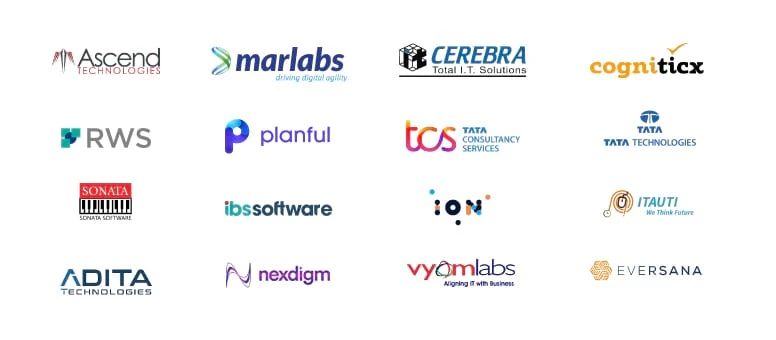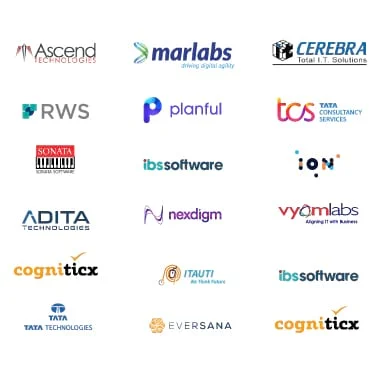30+ Hrs
Hands On Training
Lifetime Access
Updated Content
Customizable
Learning Paths
Industry Expert
Mentors
Projects
Advanced Interactive

Hands On Training
Updated Content
Learning Paths
Mentors
Advanced Interactive
Dell Boomi is a popular cloud-based application to build and deploy integrations between multiple apps and devices. It helps to integrate with various business systems and apps and strengthens business operations through connectivity and integration solutions.
HKR Trainings offers the best Dell Boomi Training with an industry-standard curriculum and job-oriented skills to clear the certification exam. This program covers skills like the Dell Boomi introduction, cloud integration, concepts of AtomSphere, process building, web services, error handling techniques, standard/custom functions, and more. Further, the trainer will support you in delivering all the concepts well and help you understand them practically. Our team will also assist you across the course and help you to reach your goal. After this course, you can explore multiple job offers with expert skills. Therefore, enroll today in this Dell Boomi Course and achieve your desired IT career.
To apply for the Dell Boomi Training, you need to either:
The dell boomi training course curriculum at HKR Trainings is engineered by certified experts to enhance the learning experience. The following module includes all of the course content in detail. Let's have a look at each module one after the other.
This project captures all the steps in a transaction lifecycle with a series of integrations.
This Project Operational integrations drive data consistency, providing a better view of business activity.


To learn Dell Boomi, you need to have basic knowledge on XML and web based tools.
Two languages are supported by Dell Boomi. They are Javascript and Groovy. Both Javascript and Groovy have similarities in the syntax. You can perform numeric calculations, string manipulations and implement conditional logic using these two scripting languages.
Following are the professionals who can benefit by attending this course:
In order to start your Dell Boomi Course you need to enroll for this Course through HKR Trainings website. Our Customer support team will reach you out within 2 working days to explain you more details.
When you complete your Dell Boomi Course, HKR Trainings will issue you the course Completion certificate.
Our trainers for Dell Boomi Course are the Skilled Professionals with 5+ years of experience in Dell Boomi.
Dell Boomi Certification training increases the weightage to your resume compared to other professionals. It will also help you to seize better job opportunities with the best CTC.
At HKR trainings we assist our learners in every aspect that is required. Right from the beginning we provide our learners the best Dell Boomi Online training and make sure that they are ready for their interview.
Each and every class is recorded so if you missed any class you can review the recordings and clarify any doubts with the trainer in next class.
Yes, we don’t assure 100% placement assistance. We are tied up with some corporate companies so when they have a requirement we send your profiles to them.
Yes, we provide demo before starting any training in which you can clear all your doubts before starting training.
Our trainers are real-time experts who are presently working on a particular platform on which they are providing training.
You can call our customer care 24/7
Max of the students gets satisfied with our training if you are not then we provide specialised training in return.
Boomi is a fast-paced atmosphere where a lot can be accomplished in a short period of time. Yes, a comprehensive two-way integration may be completed in 30 to 50 hours. A professional Boomi Consultant may complete a project in two to three weeks if everything is precisely described and nothing changes.
And, in today's digital world, the Dell Boomi can provide that dynamic component. It is also prepared to offer on-demand integration solutions. Users may quickly select the one that best suits their needs and put it to work for them. The Dell Boomi makes data measurement and categorization simple.
Cloud Integration Concerns, Dell Boomi Account Setup, AtomSphere Process and Shapes, Flow Control, Error Handling Techniques, Testing and Deployment of Interface, Web Services, High Volume Data Handling, and other topics are covered in this Dell Boomi course
One of the best features of Dell Boomi is minimal coding requirements. It provides the pre-built integration components to use. So users can use these reusable components along with the drag and drop mapping tools to create the integrations.
The Dell Boomi Certification is designed for IT professionals who want to advance their careers. It gives you a thorough understanding of integration ideas, from the fundamentals to the advanced.
Connectivity is critical to corporate success in today's digitally enabled business environment. Dell Boomi's multi-purpose iPaaS cloud application platform, for example, provides intelligent connectivity , best cloud solutions, improved data management and integration options, etc.
Boomi is mostly a technical tool for connecting business systems, and therefore, business technology teams use it. It addresses integration needs in marketing, sales, and finance. So Professionals with Dell boomi experience are in high demand.
Dell Boomi AtomSphere is a multi-tenant on-demand cloud integration platform to connect applications and data in the cloud and on site. This platform allows clients to build cloud-based integration processes and transfer data from the cloud to on-site applications.
Environments are the workspaces created and used by users for the purpose of testing or production. Environments allow you to handle dedicated and separate deployment configurations for various phases of development lifecycle.
Dell Boomi is used by organizations for connecting People, applications, processes, data and devices in order to be engaged anywhere in a unique, unified platform. It also allows you to catalogue and synchronize the data, and integrate a myriad of apps, devices and databases into the business.
For Assistance Contact:
![]()
![]() +91 9711699759
+91 9711699759
Query